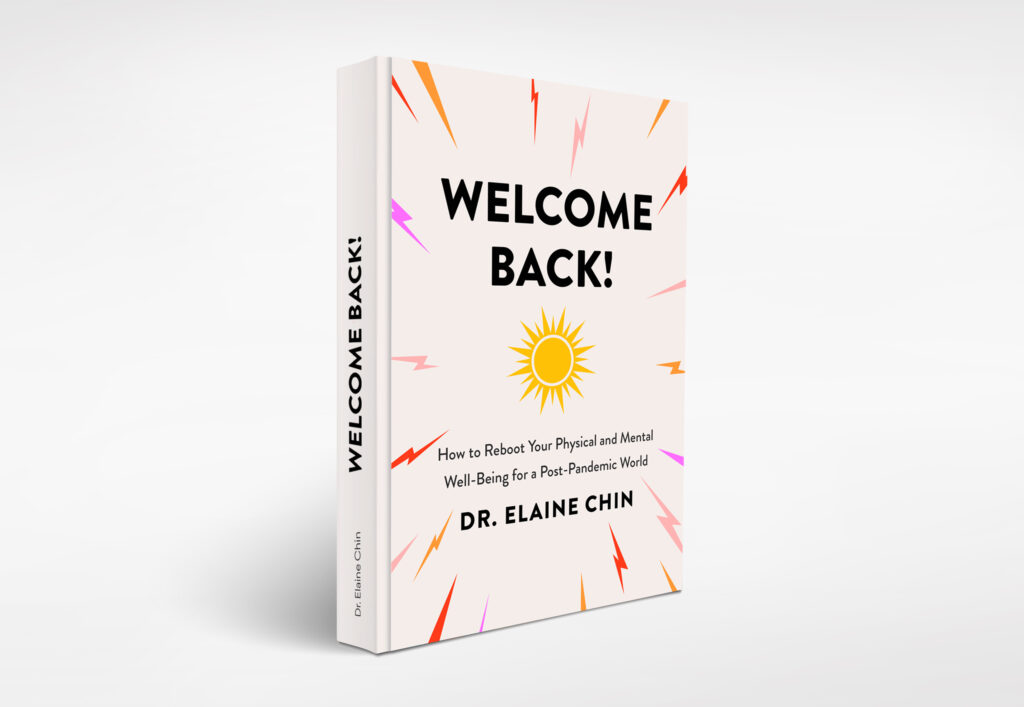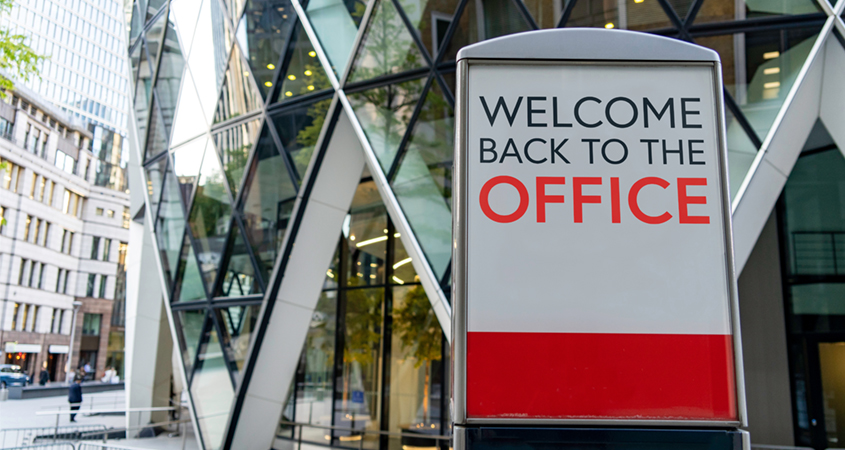Canadian Interiors – Published Dec 23, 2021
We need to make ‘Return to Work Plans’ a priority even in the face of new variants like Omicron and whatever may come next. The excerpts that follow from my new book, Welcome Back! How to Reboot Your Physical and Mental Well-Being for a Post-Pandemic World, touch upon some very real heath concerns happening because of COVID-19, while offering some advice on how we can move forward and ride the COVID-19 wave back to some new normalcy by Spring 2022.
Returning to Work and Social Interactions
Everyone needs to return to a place where they can build relationships again for their emotional well-being. Relationships give us opportunities for healing, little iterative moments, all through the day. We get stronger from each other, and we become stronger together.
We are at a critical inflection point of the COVID-19 pandemic. Many employees have continued to suffer from myriad emotional and physical stressors that have left them feeling depressed or burned out.
In May 2021, Innovation Health Group published a white paper where I was the lead researcher. Our team found Canadian employees across all industries were anxiously anticipating more meaningful communication and direction from their leadership. One of the key takeaways was more than 88 per cent of employees said their employers have yet to communicate a coherent COVID-19 vaccination policy to help get them back to the workplace. It’s an eye-opening finding that helps to underscore that now more than ever, employees need to know and feel that their employer is providing effective health and safety support before they are willing to return to their workplace. While those we surveyed continue to have concerns about the safety (41 per cent) and efficacy (44 per cent) of COVID-19 vaccines, the vast majority (84 per cent of employees) have decided to get their vaccines. As a physician, what was most disheartening to me was discovering that health practitioners (20 per cent) were the least sought-out source of information about the vaccines. Yet, we can only assume as a group we are more trusted than traditional and social media.

My Experience with Post-Traumatic Stress Disorder
While watching the evening newscast of yet another horrible day for hospital doctors and nurses trying to do their best work to save lives, working with the equipment they had on hand, I began to cry.
My son said to me, “What’s wrong with you? You don’t need to cry. It’s not you and not your patients.” That sent me off on a full-on tirade, with tears streaming down my face. I said something like this:
It could have been me. It could be my clinic patients or my nursing home patients. While you are safely home playing video games and eating home-cooked meals and enjoying clean laundry, your dad’s and mom’s friends are risking their lives every day to deal with stupid people who refuse to listen to science-based health advice – to stay away from each other and simply wear a mask! They could die and leave their kids without parents.
The flood of my current fears and the anxiety I experienced during SARS came to the forefront, and I proceeded to tell him what we had had to do in 2003 to keep him safe. None of us knew who would get SARS – his parents, uncle, or grandfather, who were all working frontline SARS in Toronto.
My meltdown probably lasted 15 minutes, and I know I was sobbing and screaming at him. Needless to say, he didn’t utter a word more and has never again asked me, “What’s wrong?” Because everything was really wrong.
When Do We Go Back to Normal?
Most citizens appreciate the challenging work and decisions made by many public officials. But it’s time to have new thought leadership on how we manage a COVID-19 endemic in the years to come. We need different people at the table, with fresh ideas and a new lens on future issues. Robust conversations are necessary as governments grapple with policies to reignite a global economy. Perhaps a good place to start is to appoint a new set of public health officials who are less biased with the existing data and who can look at the numbers in a new way. A holistic healthcare team -such as nurses, psychologists, and social workers -needs to speak out about community care outreach and mental health programs for at-risk groups. Economists and small business owners must be heard, not just multinational and national companies. Few have highlighted the importance of financial health to maintain physical and mental health. Beyond infectious disease specialists, we should bring in data scientists with artificial intelligence experience to model all types of data sets so that we can make better decisions with more insightful information. And let us not forget the computer programmers. The reality is, we need more of them to support disease reporting and tracking, and to help us improve the logistics of booster vaccination programs in the future. We need to accept that there will be uncertainty and even chaos in our lives. COVID-19 has forced us to see the fragility within some sectors of our communities.
As life returns to a new normal, we must again celebrate small and big moments in person. There are so many reasons to get together to welcome a new baby to the family, complete funeral rituals, and recognize the graduates who missed their ceremonies at high school or college. It’s time to plan weddings and family vacations. Here’s a checklist of five daily actions to move us all toward flourishing:
- Remember to savour both the small and big victories.
- Take time to be in the present and notice all the good things around you.
- Be thankful for all the positive things that have happened.
- Pay it forward by performing acts of kindness.
- Try something new to do outside of your comfort zone.
Moving Forward, Final Thoughts
Trying something new also applies to workplace design. There’s a section in the book examining the merits of pet therapy by providing a space for pets in the workplace. If that’s not possible, then introduce images or rolling video of pets at play. It’s part and parcel of an ecotherapy approach, which also includes windows – more and more windows. Designers may also want to consider bringing more plants into buildings and creating spaces where employees have more freedom to walk about.
Throughout the pandemic, I have been advising clients of DPI Construction Management on the tactile steps companies can take to provide safe work environments for their employees. In one instance, the client made wholesale upgrades to their HVAC system to increase the air quality and circulation factor within their office space. Another advisory session with a large multinational on mental health helped to bring teams back into an office culture where creative brainstorming and collaboration are key drivers to the business. While I’m a big proponent for face-to-face meetings (masked, of course), I still host video calls for their clients on the latest public and proprietary COVID developments around boosters, variants and employee health and wellness.
Moving forward, we must learn to live with and work around future variants of concern. To do so, people should wear a mask indoors at work. We must continue to embrace the need for people to get vaccinated, meaning two shots plus their booster. Rapid tests should also be used on a routine basis to limit the spread of the virus. And one final thought – organizations should consider offering antibody testing to employees. Knowing that their employees’ vaccines have effectively mounted a strong immune response with both a high antibody count and neutralization against specific variants should provide further peace of mind.


